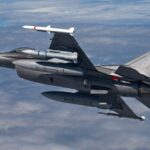
Although much of the long-range strike bomber program remains shrouded in mystery, three independent analysts told lawmakers on Sept. 9 that the Air Force was on the right path to avoid the cost and requirements growth it saw during the B-2 and F-35 programs.Details on the LRS-B program remain scarce, but the service has funded the two competitors—B-2 manufacturer Northrop Grumman [NOC] and a Lockheed Martin [LMT]-Boeing [BA] team—to conduct extensive risk reduction on integrating propulsion systems, apertures and antennas,…













